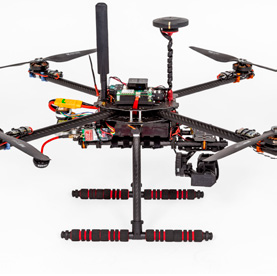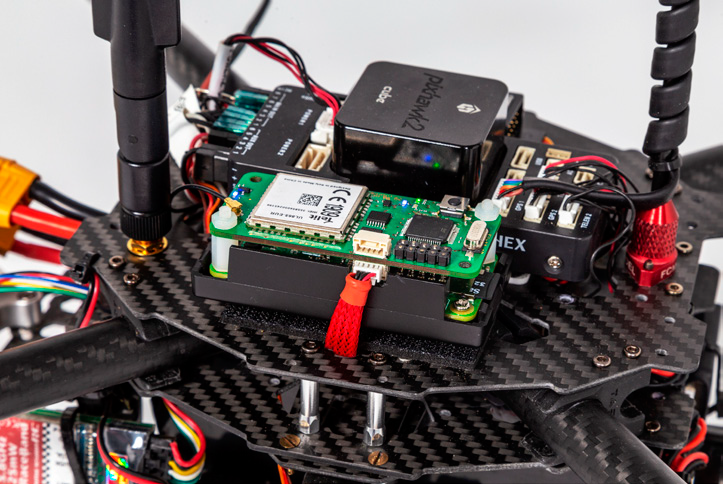Control via a voice channel
Multicopters, also referred to as drones, offer some promising solutions. Delivery traffic, for example, could be moved from the road to the skies. That would save fossil fuels and reduce CO2 emissions. Drones could also explore critical deployment zones when it comes to firefighting or hazardous areas. The prerequisite to achieving this is reliable communication for controlling the drones and determining their location. This is currently usually carried out by radio, but the range involved is quite limited. Control via mobile data channels is one additional option, but the risk of dropped connections and network overload is still quite high.


Solution: voice channels of mobile networks
Experts at the Fraunhofer Institute for Telecommunications, Heinrich Hertz Institute, HHI, have developed a solution that is stable, affordable, not limited in range, and essentially ready to go: controlling drones using the voice channels in mobile networks. “A major advantage is that – unlike the data connections – the voice channels are available almost everywhere and they’re highly reliable, too,” explains Tom Piechotta, research associate at Fraunhofer HHI.
Global coverage
Controllers on the ground transmit commands to the drone; the device then returns information on its position, altitude, or battery status. “We convert the commands into audio signals, in much the same way as modems used to,” explains Piechotta. Because transmission is via the normal cellular network, a connection to the drone can be established from almost anywhere in the world.
Future-proof control in real time
But how can you control a drone when it is out of sight, perhaps even on the other side of the world? The drone’s location can be visualized using an online map service such as Google Maps. Also shown on the map are the drone’s position and altitude, which the device transmits in real time. Another option is to install sensors on the drone to detect and avoid unexpected obstacles, such as birds, helicopters, or cranes.
“With our system we rarely come across any dead spots. If a network is down, the connection switches to another mobile communications standard. If the connection is lost, the drone has an automatic call-back function that activates almost immediately,” explains Piechotta. “The technology is considered future-proof: mobile communications standards come and go, but voice channels are a permanent feature. Mobile networks will always provide voice channels and, as long as this remains the case, the system we propose is a reliable and affordable alternative to conventional data connections.” In short, it’s now possible to communicate with drones anywhere, at any time.
Last modified: